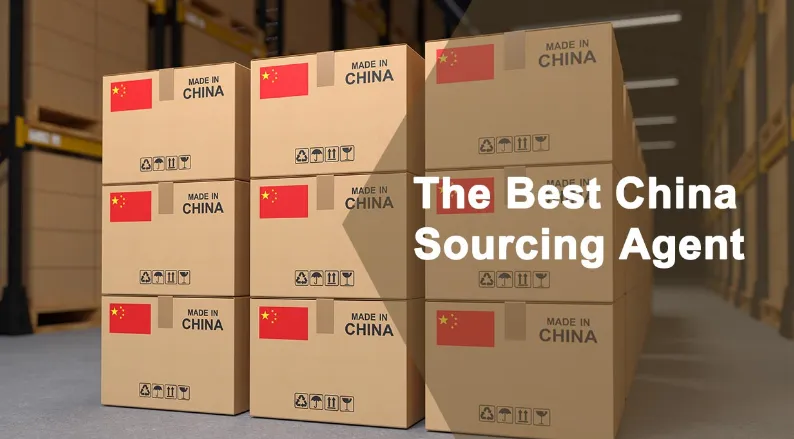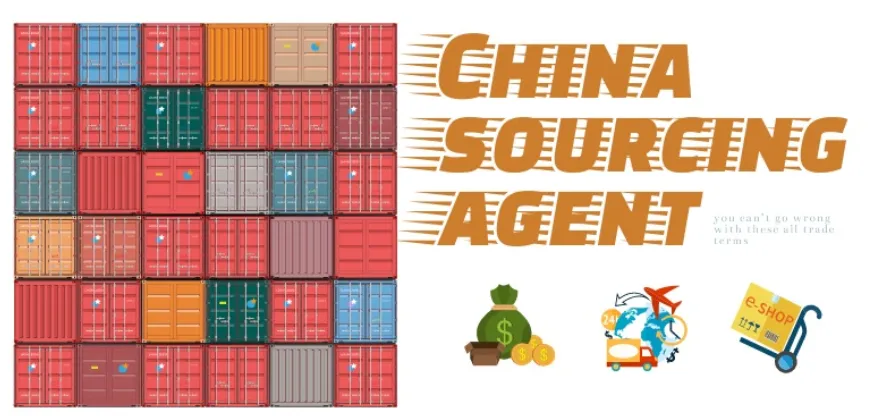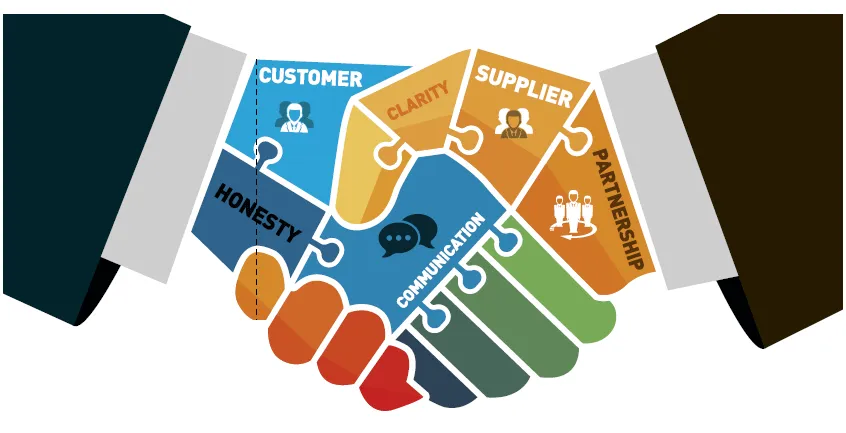China Procurement Risk Management: A Framework for Chief Procurement Officers

For Chief Procurement Officers and supply chain leaders, China is no longer a simple low-cost sourcing destination. It's a complex risk-reward equation. Geopolitical tensions, stringent new ESG regulations, and persistent logistical volatility demand a sophisticated, strategic approach. This guide moves beyond generic tips to provide a proven framework for transforming your China procurement from a vulnerability into a pillar of resilience.
Modern Risk is Multidimensional: Today's threats extend far beyond quality and cost to include geopolitical, ESG, and cyber risks that can halt your supply chain overnight.
Adopt a Framework, Not a Fix: Effective management requires a continuous 4-step cycle: Identify, Assess, Mitigate, and Monitor.
ESG is a Strategic Shield: Compliance with regulations like the UFLPA is no longer optional; it's a critical component of risk mitigation that protects revenue and reputation.
What Gets Measured Gets Managed: Implement specific KPIs—like Supplier Financial Health Scores and On-Time Delivery Rates—to move from reactive firefighting to proactive control.
Your Sourcing Agent is Your First Line of Defense: Their capability in risk management should be a primary selection criterion, baked into your service-level agreements (SLAs).

The classic model of risk—focused on quality, delivery, and price—is dangerously outdated. To build a resilient supply chain, you must map your exposure across six interconnected pillars.
Geopolitical & Regulatory Risk: This is the macro landscape. It includes the potential for trade tariffs, export controls, and customs delays stemming from international tensions. More concretely, it encompasses laws like the U.S. Uyghur Forced Labor Prevention Act (UFLPA), which mandates rigorous supply chain due diligence. A shipment flagged under UFLPA can be detained indefinitely, turning a container of finished goods into a massive financial liability.
Operational & Supply Risk: This is the reality on the factory floor. What happens if your primary supplier faces a financial crisis? What if a production line is shut down due to a local COVID-19 outbreak? This category includes supplier bankruptcy, production capacity constraints, and labor shortages. The core failure here is single-source dependency.
ESG & Reputational Risk: Environmental, Social, and Governance (ESG) factors have evolved from a "nice-to-have" to a core business risk. This includes:
Environmental: Scrutiny over carbon emissions, water usage, and waste management from your suppliers.
Social: Ensuring no forced, child, or prison labor exists in your supply chain—the direct focus of the UFLPA.
Governance: Corruption and lack of transparency in business dealings. A negative audit or NGO report can trigger consumer backlash and investor flight faster than a product recall.
Quality & Intellectual Property (IP) Risk: The classic concerns, but with modern twists. Beyond simple product defects, this includes the risk of IP theft or counterfeiting. In complex manufacturing, a supplier might subtly alter your design or use your proprietary technology for other clients. Robust legal agreements and on-the-ground oversight are non-negotiable.
Logistics & Cybersecurity Risk: Even a perfectly manufactured product is at risk until it reaches your warehouse. This pillar covers port congestion, shipping cost volatility, and transportation delays. Crucially, it also includes cybersecurity: Are your design files and production data secure when transmitted to and from Chinese suppliers?
Financial & Currency Risk: This encompasses payment security (e.g., advance payment defaults), currency exchange fluctuations that can erase narrow margins, and the impact of inflation on raw material costs agreed upon in fixed-price contracts.
Managing these risks isn't a one-time project. It's an ongoing cycle that must be integrated into your standard procurement operations. Here’s how to implement it.

You can't manage what you don't know. Systematically identify risks through:
Supplier Surveys: Detailed questionnaires covering financials, ownership structure, compliance certifications, and sub-supplier information.
Third-Party Data: Leverage platforms like EcoVadis or Verifik to get independent risk scores on your suppliers.
On-Site Audits: Nothing replaces boots on the ground. Conduct regular quality, social, and environmental audits.
Pro Tip: Create a central “Supplier Risk Register” (a simple spreadsheet will do) to log every identified risk for each supplier.
Not all risks are created equal. Use a Risk Matrix to prioritize your efforts based on two factors:
Likelihood: How probable is it that this risk will occur? (Scale: Rare to Almost Certain)
Impact: How severe would the impact be on your business? (Scale: Insignificant to Catastrophic)
Plot each risk on the matrix. The risks in the high-likelihood/high-impact quadrant are your top priorities. This stops you from wasting resources on trivialities.
For each high-priority risk, develop a mitigation strategy. The four main types are:
Avoid: Cease business with a high-risk supplier or region.
Transfer: Use contracts to transfer risk (e.g., Incoterms like FOB, or requiring suppliers to hold product liability insurance).
Mitigate: Take action to reduce the likelihood or impact. Examples include dual-sourcing, implementing stricter QC checks, or providing supplier training.
Accept: For low-priority risks, consciously decide to accept them and have a contingency plan in place.
The risk landscape is fluid. Establish a rhythm for monitoring.
Track Leading KPIs: Don’t wait for a disaster. Monitor indicators like On-Time Delivery (OTD) rate (a drop can signal production problems) and Supplier Financial Health scores.
Regular Reviews: Quarterly risk review meetings should be a fixed item on your procurement team's agenda.
For procurement in China, ESG is arguably the most dynamic and critical risk area. It’s where ethics and operational integrity collide.
Understanding UFLPA Enforcement: The UFLPA creates a "rebuttable presumption" that goods made wholly or in part in China's Xinjiang region are made with forced labor and are prohibited from entering the U.S. The burden of proof is on the importer to provide clear and convincing evidence of a clean supply chain. This isn't about vague promises; it's about detailed traceability down to the raw material level.

Your Action Plan for ESG Due Diligence:
Map to the Source: You must map your supply chain beyond Tier 1 suppliers to sub-suppliers (Tier 2, Tier 3) for high-risk components.
Conduct Targeted Audits: Standard audits won't suffice. Use audits that specifically focus on forced labor indicators, such as checks on worker interviews, wage records, and freedom of movement.
Contractualize Compliance: Your supplier contracts must include clauses that grant you the right to conduct ESG audits and immediately terminate the agreement for violations. Specify that all costs associated with a customs detention under UFLPA will be borne by the supplier.
Convert abstract risk into measurable data. Here are the KPIs your dashboard needs:
| KPI Category | Example Metrics | Why It Matters |
|---|---|---|
| Supplier Health | Financial Stability Score (from third-party data), Audit Score (e.g., 95/100) | Early warning of potential bankruptcy or compliance failure. |
| Operational Performance | On-Time Delivery (OTD) %, Production Defect Rate (DPPM) | Indicators of production stability and quality control effectiveness. |
| Supply Chain Resilience | % of Spend with Single-Source Suppliers, Alternate Supplier Qualification Status | Measures your vulnerability to a single point of failure. |
| ESG Compliance | % of High-Risk Suppliers with Completed ESG Audits, Number of Compliance Violations | Tracks progress in mitigating critical reputational and legal risks. |
Background: A European automotive components manufacturer sourced 100% of its precision aluminum castings from a single supplier in Guangdong, China. While cost-effective, this posed a significant risk.
The Trigger: In 2023, escalating trade tensions threatened to impose punitive tariffs on these components, which would have made their product uncompetitive.
The Solution: The company engaged a sourcing agent not to abandon China, but to execute a "China+1" strategy. While continuing production in Guangdong, the agent was tasked with identifying and qualifying a second source in Vietnam. The process involved:
Factory audits against their strict quality and ethical standards.
Sample production runs and rigorous testing.
Small pilot orders to validate production capability.
The Outcome: Within 14 months, the company had successfully qualified a Vietnamese supplier and shifted 40% of its volume. This diversification not only shielded them from potential tariffs but also created competitive pressure, leading to a 3% cost reduction from the original Chinese supplier. Their supply chain was fundamentally more resilient.
Mastering procurement risk in China is no longer just about avoiding losses. It's a strategic capability that allows you to operate with confidence, protect your brand, and outperform competitors who are still reacting to crises. By implementing this framework, you shift from being a passive victim of circumstance to an active architect of a resilient, responsible, and high-performing global supply chain.
1. We're a small company with a limited budget. Where should we focus our limited risk management resources first?
Prioritize based on impact. Your first investment should be in a rigorous supplier qualification process, including factory audits and reference checks for your top-spend suppliers. A single mistake in supplier selection is the costliest risk of all. Next, ensure your contracts are ironclad. These two steps provide the highest return on risk mitigation investment for an SMB.
2. How does risk management differ when sourcing from Southern China (e.g., Guangdong) versus Northern China (e.g., Shandong)?
Southern China, particularly the Pearl River Delta, is highly developed with extensive logistics networks but faces higher labor costs and turnover. Risks there are more about competitive pressure and IP protection. Northern China may have lower costs but can face greater regulatory scrutiny from local authorities and sometimes less international trade experience, increasing compliance and communication risks. Always tailor your due diligence to the specific regional landscape.
3. What are the most common mistakes you see in contracts with Chinese suppliers that create risk?
The biggest mistakes are vague specifications, unclear IP ownership clauses, and weak termination/penalty clauses. Many contracts fail to specify which party is responsible for new compliance costs (like those for ESG regulations) or lack a robust force majeure clause tailored for regional disruptions. Always have contracts reviewed by a legal professional versed in Chinese commercial law.
4. Beyond UFLPA, what other emerging ESG regulations should we be watching?
Keep a close eye on the EU's Corporate Sustainability Due Diligence Directive (CSDDD). It will mandate human rights and environmental due diligence across the entire value chain for companies operating in the EU. Also, various countries are proposing "carbon border taxes" (like the EU's CBAM), which will impact the cost of energy-intensive imports.
5. How can we effectively assess a potential supplier's financial health from overseas?
While not perfect, start by requesting their business license (营业执照) and asking for bank references. Use third-party business credit reporting services available in China. Additionally, ask pointed questions during meetings about their major customers, loan situations, and investment in new equipment—hesitancy or vagueness can be a red flag.
6. What is the role of a sourcing agent in risk management, and how should we hold them accountable?
A good agent acts as your on-the-ground risk manager. Their value is in proactive verification, not just facilitation. Hold them accountable by including specific Key Performance Indicators (KPIs) in your agreement with them, such as a minimum acceptable factory audit score or a requirement for unannounced spot checks. Their fee should be tied to successful, compliant outcomes.
7. Are there specific "red flags" during a factory tour that anyone, even a non-expert, can spot?
Yes. Look for poor housekeeping (a messy factory often has poor quality control), a lack of visible safety protocols (no fire extinguishers, unsafe wiring), and empty production lines during normal working hours. Most importantly, if the manager refuses to let you speak with workers freely or show you certain areas, consider it a major warning sign.
8. How do we handle a situation where a critical component is only available from a single, high-risk supplier?
For single-source components, your strategy shifts from avoidance to active management. This includes:
Inventory Buffering: Holding strategic safety stock.
Collaborative Planning: Engaging in deep joint business planning with the supplier.
Second-Source Development: Actively funding R&D with the supplier or a partner to develop an alternative component or material over the long term.
9. What's the difference between a pre-shipment inspection and a production monitoring audit?
A pre-shipment inspection (PSI) checks the quality of finished goods just before they ship. It's a final snapshot. A production monitoring audit occurs during the manufacturing process to verify that quality control systems are being followed correctly. The audit is proactive and can catch issues before an entire batch is produced incorrectly. For complex products, both are necessary.
10. How should our risk management strategy adjust when sourcing high-value, low-volume goods versus low-value, high-volume goods?
For high-value goods (e.g., specialized machinery), invest heavily in upfront engineering reviews, IP protection, and detailed pre-shipment inspections. The cost of a single failure is huge. For high-volume goods (e.g., consumer products), focus on statistical process control at the factory, consistent quality over time, and the supplier's ability to scale while maintaining standards.
11. What are the most overlooked cybersecurity risks when sharing design files with Chinese manufacturers?
Companies often focus on NDAs but forget about data in transit. Always use secure, encrypted file transfer platforms, not email. Establish clear protocols for data access and deletion after a project. Also, ensure your CAD files are "read-only" or watermarked to prevent unauthorized modification or use.
12. After a risk event occurs (e.g., a delayed shipment), what should the post-mortem process look like?
Conduct a blameless post-mortem focused on process, not people. Answer: What was the root cause? Where did our early warning system fail? What specific change can we make to our framework (e.g., a new KPI, a different contract clause, a new verification step) to prevent this exact issue from happening again? Document this and update your risk register.
Contact us
Call Us: +86 193 7668 8822
Email:[email protected]
Add: Building B, No.2, He Er Er Road, Dawangshan Community, Shajing Street, Bao'an District, Shenzhen, China